Give edible ferns a try with this easy sauteed fiddleheads recipe! It’s a healthy and delicious way to experiment with a new vegetable.

This post may contain affiliate links. For more information, see my affiliate disclosure.
After spotting fiddlehead ferns at the Linden Hills Co-op this week, I knew it was time to experiment with them for a blog recipe. Especially because their season is so short!
If you aren’t familiar with these snake-like veggies, fiddleheads are the young, curled fronds of ferns. They are typically harvested for a very short period of time in the spring in Canada, and the US Northeast and Midwest (and in some other countries too).
Fiddleheads are similar to ramps in my book. Both are wild, hard-to-find vegetables that symbolize the beginning of warm weather!
For this recipe, I cleaned, boiled, and then sauteed fiddleheads in a winning combo of butter, lemon, and garlic! They turned out to be absolutely melt-in-your-mouth delicious. I highly recommend.
But in case you haven’t worked with fiddleheads before, I’ve rounded up some FAQs about them, so that you can feel confident preparing this spring delicacy in your home kitchen.
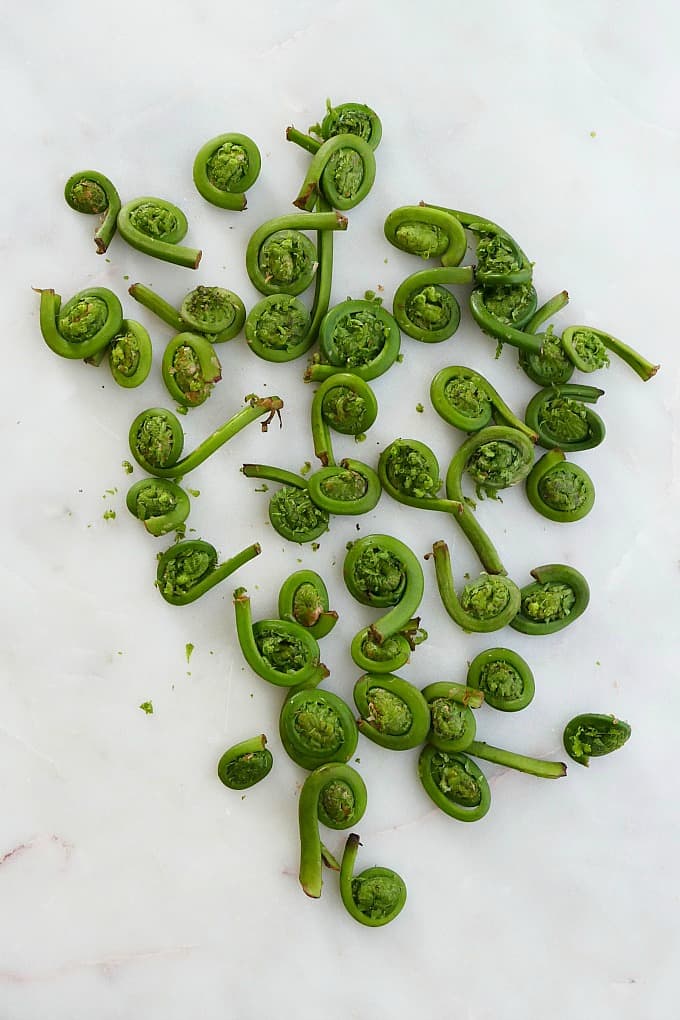
Are fiddleheads safe to eat?
Yes, they are, but you need to properly clean and prepare them. This will ensure that you do not ingest any toxins that may cause stomach upset and GI issues (1).
If you have ever eaten fiddleheads at a restaurant, they were likely thoroughly cleaned and cooked…and delicious! You will want to mimic this style of preparation in your own kitchen. Do not eat them raw.
How to Clean and Prepare Fiddleheads
To clean and cook fiddleheads safely, follow these steps (2):
- Rinse the fiddleheads, remove any papery brown skin from the tops, and then slice off any brown parts on their ends.
- Fill a large bowl with cold water and put the fiddleheads in there for a few minutes, swishing them around with your hands to remove any dirt. Discard the water and repeat this process.
- Bring a saucepan filled with water to a boil then drop the fiddleheads in there. Cook them for 10-15 minutes. Drain and rinse the fiddleheads in a colander.
- Finish off the fiddleheads by sautéing, roasting, or pickling them. Enjoy!
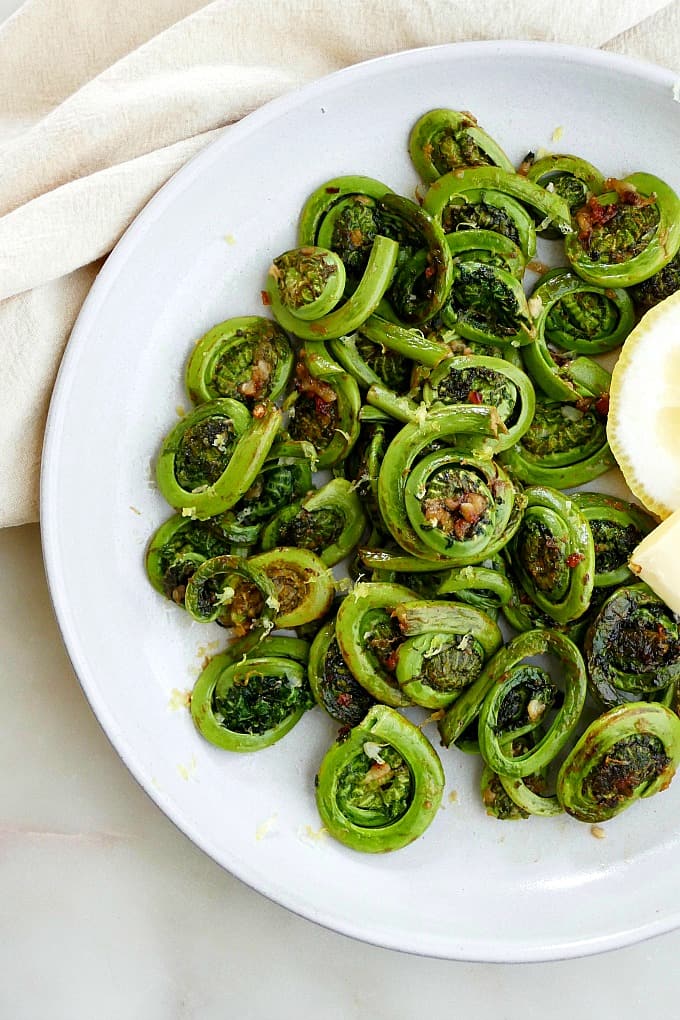
What do fiddleheads taste like?
Boiling/cooking fiddleheads removes their bitterness and brings out their delicate, delicious flavors. In my opinion, they taste like a mix between asparagus and broccoli. Some people also compare them to mushrooms.
Are fiddleheads good for you?
Fiddleheads are a rich source of many nutrients, including vitamins A and C and potassium. They also contain antioxidants, which help fight underlying cell damage in the body (3).
Where to Buy Fiddleheads
Now that I’ve convinced you to give fiddleheads a try (I mean, aren’t they just fun?!), you can likely find them at a local farmers market, co-op, or Whole Foods in late April, May, or early June.
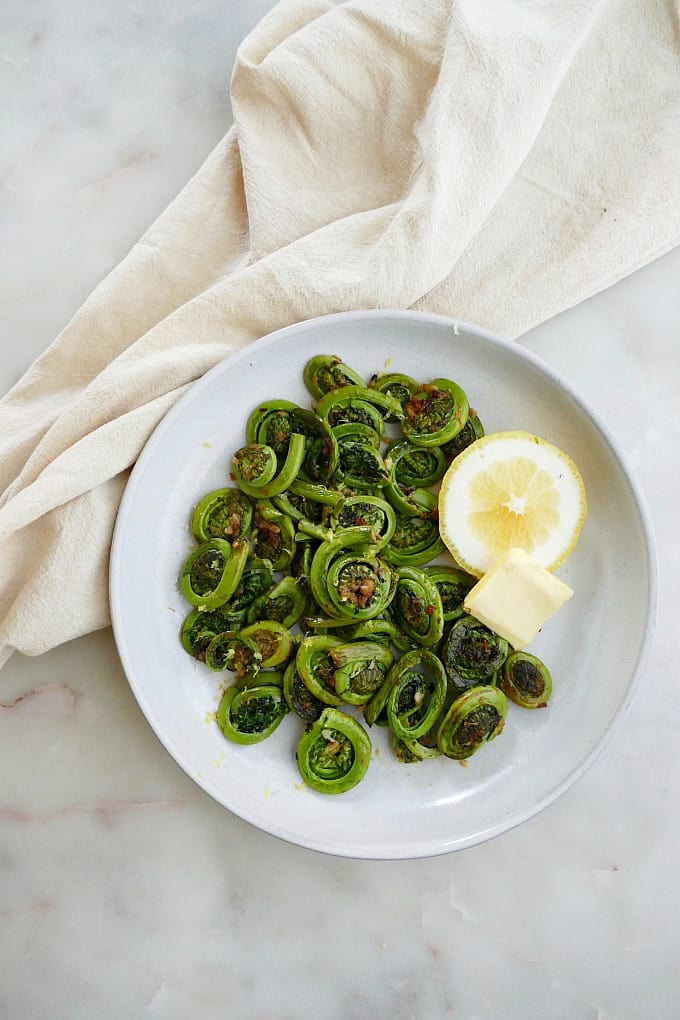
And that’s a wrap!
I’d love to hear how you like this recipe! Rate/review using the stars on the recipe card or in the comments, and follow the Veg World on YouTube, Instagram, Facebook, and Pinterest. Looking for something totally different? Browse the recipe library.
For other springy dishes, try the Shaved Asparagus Salad with Mint Tarragon Dressing or Braised Radishes and Leeks.
📖 Recipe
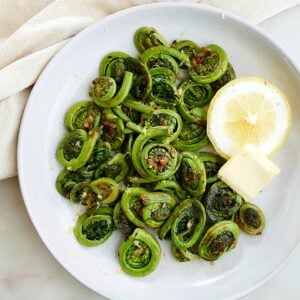
Sauteed Fiddleheads with Garlic Lemon Butter
Ingredients
- 1 pound fiddlehead ferns
- 1 tablespoon olive oil
- 2 tablespoon butter - divided
- 2 cloves garlic - pressed or minced
- 1 tablespoon lemon juice
- 1 teaspoon lemon zest
Instructions
- Prepare the fiddleheads by washing them under water, peeling off any brown papery skin (most won't have that but some might), and slicing off any brown ends. Fill a large bowl with cold water and add the fiddleheads, swishing them around with your hands to remove any dirt. Discard the water and repeat this process another time.
- Bring a pot of water to a boil. Add the fiddleheads and cook them for 10 to 15 minutes until tender. Alternatively, you can bring a couple inches of water to a boil in a large pot, insert a steamer basket with the fiddleheads, cover, and steam them for 10 to 12 minutes until tender.
- **NOTE: The recommendation to cook them for 10-15 minutes is based on food safety standards for fiddleheads. Due to the possibility of toxic compounds in fiddleheads causing stomach upset and issues, it’s recommended to boil them for 15 minutes or steam them for 10 minutes. You can read more about this here and here. However, there is some debate in the culinary world about how long fiddleheads need to be boiled; many chefs choose to blanch them for shorter periods of time (i.e. 5 minutes) so that they don’t get too soft. In addition, small fiddleheads tend to soften more quickly than larger ones, so the degree of softness can vary depending on the specific fiddleheads used. Some readers have experimented with a shorter boiling time for this recipe and have had no issues. If you want to try a shorter boiling time at your own risk, you can start checking them for doneness around 5 to 8 minutes. You can also read through the comments section below the post for tips from other readers. My recommendations to cook them for 10 to 15 minutes remain and are in accordance with food safety standards.**
- After boiling, drain and rinse the fiddleheads in a colander. Alternatively, you can transfer the fiddleheads to a bowl of ice water to completely stop the cooking process. Many people find that this also helps preserve their texture. Drain and pat dry before the next step.
- In a large skillet, heat the olive oil and 1 tablespoon of the butter over medium heat. Add the garlic and the fiddleheads, and cook for a few minutes. Stir in the other tablespoon of butter, lemon juice, and lemon zest. Cook for another few minutes, and serve warm. Enjoy!
Nutrition
Intrigued by this recipe? Pin it now for later!
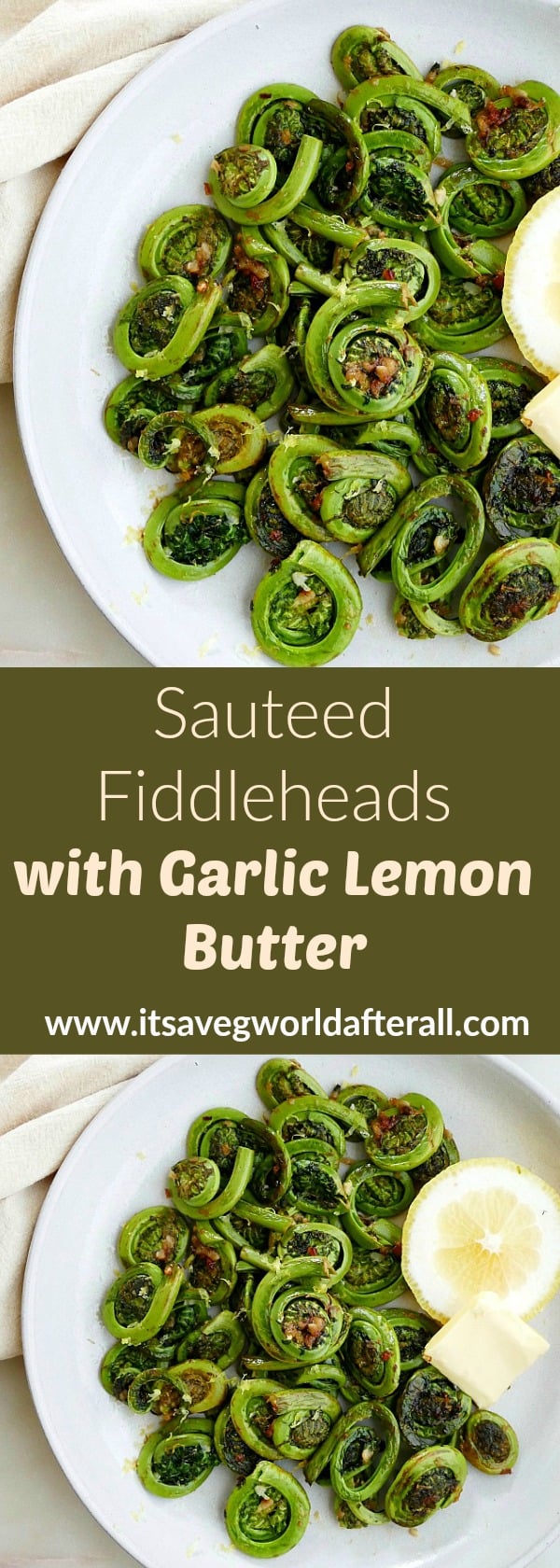
Have a great weekend,
Lizzie

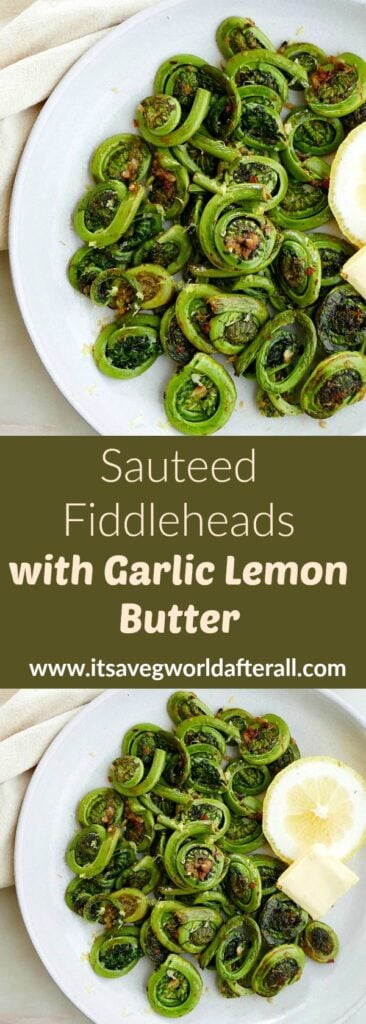
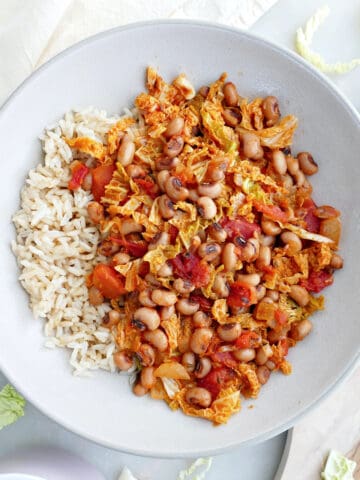

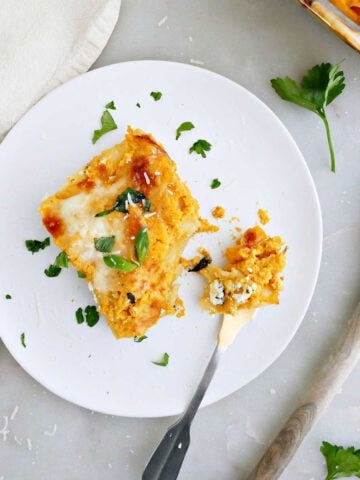

spud
Thanks, i forgot how to cook them.
While the fidleheads you buy in a market are safe, if you are foraging them yourself in the woods, it is important to know there are other fern types that are NOT edible, that look pretty similar to fidleheads (just a little more fuzzy).
Liam
Genuinely delish. My coop got a bunch of these and had no idea how to cook them but these were fire. The lemon + vegan butter was fantastic with the asparagusy-mushroomyness of the fiddlehead ferns.
Christine Roth
Excellent freezing the rest so I can have more later.
Lizzie Streit, MS, RDN
Yay, so glad to hear it!
Don R Jaffe
very tasty. like being back in France
Lizzie Streit, MS, RDN
Yay! I’m so glad you enjoyed the recipe.